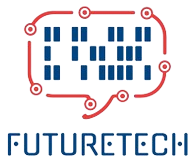Understanding TN Panels in LED Monitors
Twisted Nematic (TN) panels are among the most common types of display technologies used in LED monitors. Known for their fast response times and affordability, TN panels have been a staple in the monitor market for years. However, they come with their own set of advantages and limitations that make them suitable for specific user needs.
Key Features of TN Panels
| Feature | Description |
|---|---|
| Response Time | Typically 1ms to 5ms, making them ideal for fast-paced activities like gaming |
| Cost | Generally more affordable compared to other panel types |
| Color Reproduction | Limited color range and accuracy |
| Viewing Angles | Narrow viewing angles, usually around 160° horizontally and 170° vertically |
Advantages of TN Panels
TN panels offer several benefits that make them attractive to certain demographics:
- Fast Response Times: Given their remarkable response times, TN panels minimize motion blur and ghosting, which is crucial for gaming and fast-paced videos.
- Affordability: TN panels are generally cheaper than their IPS and VA counterparts, making them a cost-effective choice for budget-conscious consumers.
- High Refresh Rates: These panels can support high refresh rates, often above 60Hz, enhancing the overall experience for gamers.
Limitations of TN Panels
Despite their benefits, TN panels are not without limitations:
- Color Accuracy: TN panels usually have less accurate color reproduction, making them less suitable for tasks requiring precise color work, such as photo editing or graphic design.
- Viewing Angles: One of the most significant drawbacks is the narrow viewing angles, which result in color and contrast shifts when viewed from the side.
- Contrast Ratios: The contrast levels in TN panels are generally lower than those in VA panels, leading to less vibrant images.
Comparing TN Panels with Other Technologies
When selecting a monitor, it’s useful to compare TN panels with other types of panels:
TN vs. IPS
- Color Accuracy: IPS panels provide superior color accuracy and wider viewing angles, making them better for creative work.
- Response Time: TN panels have faster response times, which is advantageous for gaming.
TN vs. VA
- Contrast Ratios: VA panels generally offer better contrast ratios than TN panels, resulting in deeper blacks and more vibrant images.
- Response Time: While VA panels are slower in response times compared to TN panels, they still offer decent performance for most tasks.
Ideal Use Cases for TN Panels
Considering the features, advantages, and limitations, TN panels are best suited for:
- Gaming: The quick response times and high refresh rates make TN panels ideal for competitive gaming.
- Office Work: Their affordability makes them a good choice for general office use, where color accuracy and viewing angles are less critical.
- Budget-Friendly Options: Consumers looking for cost-effective monitors will find TN panels to be a viable option.
Conclusion
While TN panels may not offer the best color accuracy or viewing angles, their affordability and fast response times make them a popular choice for gamers and budget-conscious consumers. Understanding the strengths and weaknesses of TN panels can help you make an informed decision when selecting an LED monitor.

